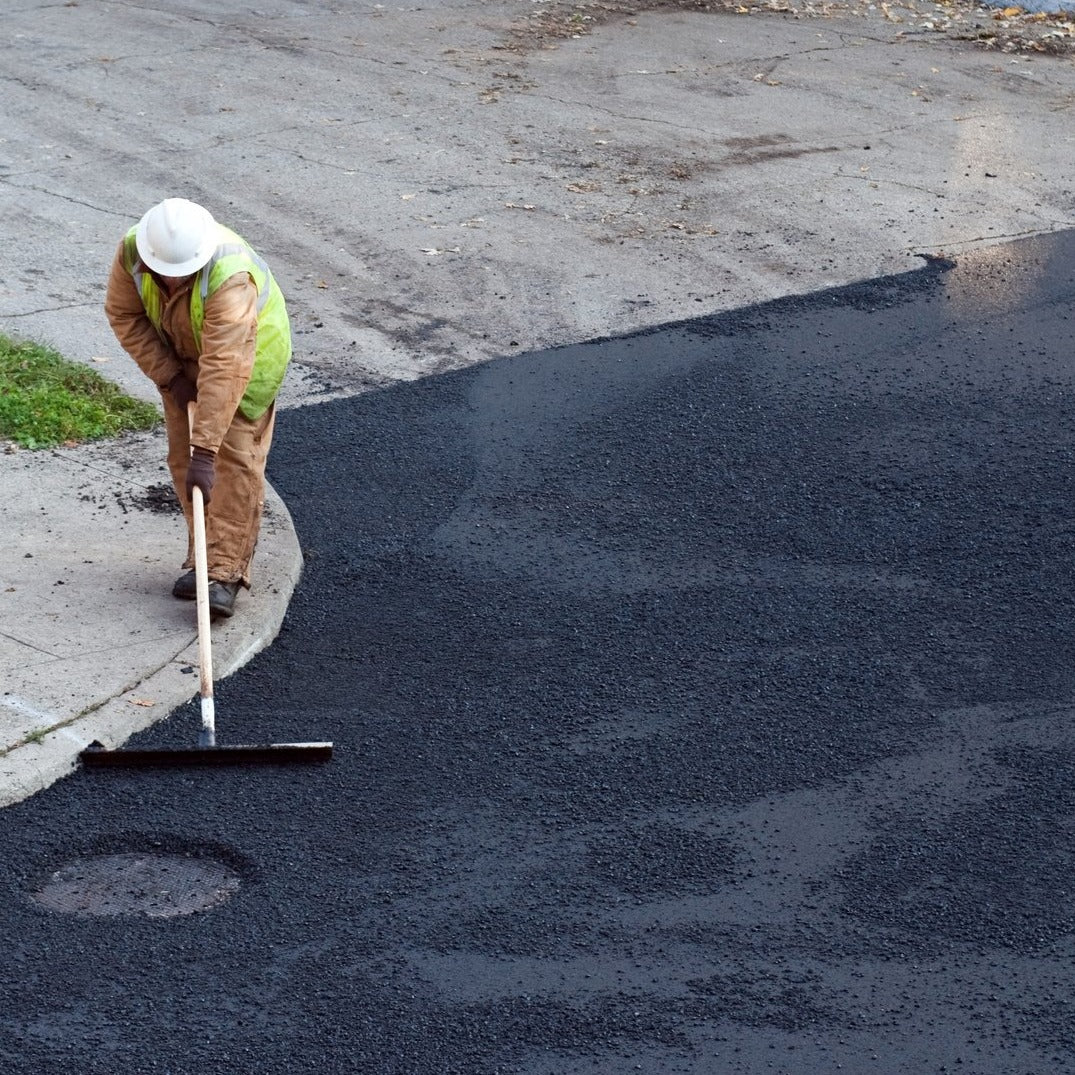Hot Mix Asphalt Paving: Your Gateway to Costs Angled Parking Solutions
Hot Mix Asphalt Paving: Your Gateway to Costs Angled Parking Solutions
Blog Article
Unlocking the Tricks of Hot Mix Asphalt Modern Technology
Exploring the depths of warm mix asphalt technology uncovers a world where precise formulas and thorough processes merge to shape our roads and infrastructure. The combination of binders, fillers, and accumulations isn't just a building and construction job but a strategic orchestration of toughness and efficiency. As we peer right into the complex dancing of elements, a tapestry of resilience and sustainability unfolds. What lies beneath this surface area of asphaltic proficiency, and what secrets wait to be unveiled in the world of paving innovations?
Importance of Hot Mix Asphalt
Warm Mix Asphalt plays a critical role in modern infrastructure advancement due to its toughness and cost-effectiveness. As the most generally used paving material for roads, highways, and car parking lots, Hot Mix Asphalt provides a variety of benefits that contribute to its significance in building jobs.
The toughness of Warm Mix Asphalt originates from its structure, which consists of accumulations, binder, and filler products that are meticulously selected and blended to fulfill details efficiency demands. This accurate combination results in a strong and flexible sidewalk that can sustain constant usage without substantial damage. Hot Mix Asphalt is 100% recyclable, further boosting its sustainability and environmental benefits. On the whole, the relevance of Hot Mix Asphalt in infrastructure growth can not be downplayed, as it remains to be a keystone of modern-day building practices.
Parts of Asphalt Mixes
The make-up of asphalt mixes consists of very carefully picked aggregates, binder, and filler materials that are vital for attaining details performance requirements. Aggregates are the main element of asphalt blends, giving toughness and stability. The binder, usually asphalt or asphalt concrete, holds the accumulations with each other and provides flexibility and sturdiness to the mix.
The mix and percentage of these parts play a substantial duty in determining the high quality and performance of the asphalt mix. Engineers very carefully create the mix to satisfy certain demands, thinking about variables like website traffic quantity, environment conditions, and pavement life expectancy. Proper choice and balancing of aggregates, binder, and fillers are vital for producing resilient, resilient asphalt pavements.
Mixing and Production Methods
Once the aggregates are selected, the binder, often asphalt cement, is contributed to bind the products with each other. The binder's top quality and amount dramatically influence the mix's versatility, strength, and resistance to environmental factors. In addition, fillers like moisturized lime or Rose city cement may be integrated to boost certain qualities of the asphalt mix, such as its workability or wetness resistance.
Throughout manufacturing, the aggregates and binder are heated up, commonly in between 250-325 ° F(121-163 ° C ), to assist in mixing and ensure correct finishing of Check Out Your URL the aggregates. The mixing process should be complete to attain an uniform mixture that advertises the desired efficiency qualities of the asphalt. Various techniques, such as batch blending or drum blending, are used to attain constant and premium asphalt mixes for building jobs.
Elements Affecting Asphalt Performance
Factors affecting asphalt efficiency include a variety of variables that influence the sturdiness, long life, and general high quality of asphalt sidewalks. One essential variable is the quality of products made use of in the asphalt mix. The type and resource of aggregates, the binder high quality, and the ingredients all play a significant function in establishing the performance of the asphalt sidewalk. The rank of aggregates is important as it influences the mix's workability, stability, and resistance to rutting and fracturing.

Design considerations, such as pavement thickness and drainage, are necessary in making certain the lasting efficiency of the asphalt sidewalk. By carefully considering these engineers, aspects and service providers can enhance asphalt performance and enhance the solution life of sidewalks.
Sustainable Practices in Asphalt Technology

Additionally, the development of warm-mix asphalt (WMA) technologies has actually obtained grip over the last few years. WMA permits for the manufacturing and positioning of asphalt mixes at lower temperatures compared to conventional hot-mix asphalt, leading to decreased energy consumption and greenhouse gas discharges. Moreover, making use of permeable asphalt blends can assist reduce stormwater overflow problems by enabling water to infiltrate through the sidewalk and right into the ground, promoting natural water purification and charge processes. By applying these sustainable techniques, the asphalt sector can add to constructing a much more durable and environmentally pleasant facilities network.
Verdict
In verdict, hot mix asphalt technology plays a vital duty in modern-day framework growth as a result of its durability and cost-effectiveness. By thoroughly balancing components, employing proper mixing techniques, and considering various elements, engineers can create top quality asphalt mixes that withstand hefty website traffic lots and rough climate condition. Accepting sustainable methods, such as using warm-mix technologies and recycled products, better boosts the environmental friendliness of asphalt technology.
Blending and manufacturing methods in hot mix asphalt technology entail the specific combination and handling of accumulations, binder, and fillers to produce a high-performance and durable asphalt have a peek at this site mix.Aspects affecting asphalt performance incorporate an array of variables that affect the longevity, durability, and total high quality of asphalt pavements. Lasting techniques in asphalt modern technology incorporate various initiatives aimed at minimizing the environmental impact of asphalt manufacturing and paving processes. By including recovered asphalt sidewalk (RAP) and recycled asphalt roof shingles (RAS) right into new asphalt blends, the industry can dramatically decrease the intake of raw materials and power, while also reducing land fill waste.
WMA enables for the manufacturing and placement of asphalt mixes at reduced temperatures compared to typical hot-mix asphalt, resulting in decreased power intake and greenhouse gas emissions.
Report this page